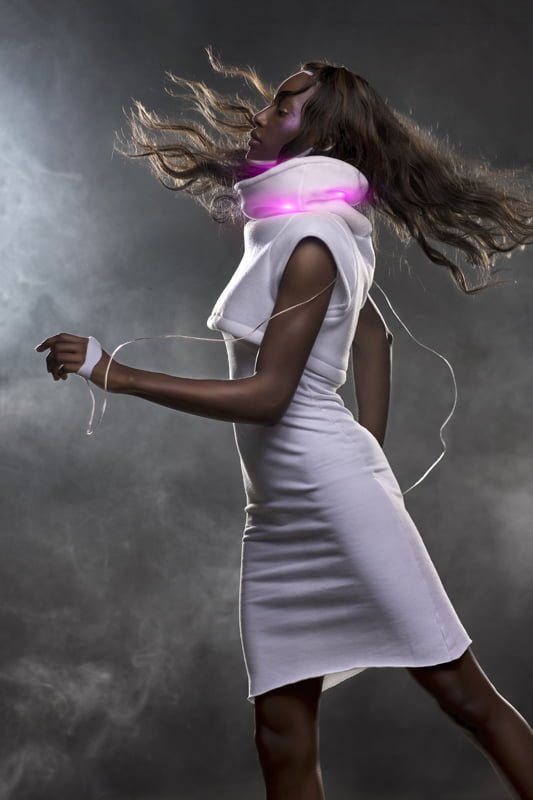What is Emotional Clothing?
Emotional clothing is a groundbreaking fashion concept, merging technology with textiles to create garments that reflect the wearer’s emotions. This innovative approach utilizes smart fabrics and biofeedback mechanisms, establishing a new form of non-verbal communication and self-awareness.

Understanding Emotional Clothing
Emotional clothing is an advanced concept that fuses technology with emotional expression. Essentially, it’s a type of wearable technology designed to respond to the wearer’s physiological and emotional states through biofeedback. The goal is to develop garments that extend the wearer’s mind and body, enhancing their connection with their environment. These smart textiles can react to various indicators such as body temperature, galvanic skin response, heart rate, and proprioception.
At its core, emotional clothing functions as a sensory device, transmitting the wearer’s emotional and physical signals. Though still emerging, this tech could revolutionize how we interact with clothing, making it an extension of our emotions.
Technology Integration
Recent advances in emotional clothing integrate smart materials that react to body temperature, skin response, heart rate, and proprioception. Key technologies include:
- Flexible Sensors: Sensors in clothing across various fields offer initial emotional assessments
- Biosensors: Implanted close to the skin, these sensors monitor health and apply technologies like human-computer interaction.
- Smart Color-Changing Materials: These materials not only change colour to express emotions but also monitor health, particularly athletes’ endurance and skin temperature.
- Phase-Change Materials and Stimulus-Responsive Hydrogels: These materials adjust their properties, like temperature or colour, based on environmental or physiological changes.
- Fiber-Optic Fabrics and Nanomaterials: Novel materials designed to enhance the functionality and comfort of smart clothing.
- Interactive Textiles: Textiles that sense and respond to stimuli from both the user and environment, supporting emotional self-regulation.
- VIBE Necklace: An emotion sensor by Philips that uses conductive ink and textile sensors to detect a range of biosignals.
- Smart Pacer Jumpsuit: Monitors body dynamics and translates data into musical melodies, creating a novel experience.
Iga Węglińska’s Emotional Clothing
Iga Węglińska, a pioneering designer from Poland, has developed a groundbreaking collection known as emotional clothing. This collection, part of her doctoral work at Krakow’s Academy of Fine Arts, creates a responsive bond between wearer and attire.
The collection features polysensory silhouettes that use biofeedback and sensory substitution. Smart garments react to bodily changes; specifically, one top alters color with temperature, while another displays stress via LEDs.
Węglińska draws from extended mind theory, where objects integrate into our cognitive processes. Her emotional clothing collection is more than a fashion statement; it demonstrates wearable technology’s potential to improve emotional well-being. Węglińska uses neoprene and thermoplastic polyester to create skin-like garments, enhancing the wearer-clothing connection.
The GER Mood Sweater by SENSOREE
The GER Mood Sweater by SENSOREE is an innovative piece that translates the wearer’s emotions into light. This interactive garment uses soft sensors to respond to physiological changes, such as the electrical conductivity of the skin, which indicates emotional arousal. The sweater’s high collar, equipped with LED lights, reflects the wearer’s emotional state, turning it into a visual display of feelings.
Each color represents a specific emotion: blue for calm, pink for excitement, yellow for ecstasy, and red for nervousness or love. The GER Mood Sweater fosters a new form of communication that is both intuitive and expressive, allowing individuals to share their emotions non-verbally. With only 100 pieces planned, this sweater highlights the intersection of art, technology, and human emotion.
Importance of Emotional Clothing
Emotional clothing addresses the challenge of emotional fatigue in our increasingly digital world, where the lines between online and offline lives blur, often leading to stress and emotional exhaustion. By providing a tangible, responsive interface between individuals and their environment, emotional clothing enhances self-awareness and offers biofeedback that can improve emotional well-being.
Key benefits include:
- Visual Feedback: Provides immediate visual cues about emotional states, helping individuals recognize and manage their feelings more effectively.
- Deeper Connection: Facilitates a deeper connection with oneself and others, fostering empathy and understanding in a digital age.
- Therapeutic Applications: Serves as a tool for managing stress and anxiety in therapeutic settings by offering a physical manifestation of emotional states.
- Cultural Expression: Acts as a medium for expressing cultural and social identity, enhancing personal expression and identity.
Emotional clothing merges fashion, technology, and psychology, transforming clothing into an active participant in the wearer’s emotional landscape. Beyond mere identity, this attire boldly communicates emotions, thus deepening our connections and mutual understanding
Future of Emotional Clothing
Looking ahead, emotional clothing is expected to incorporate advancements such as the Internet of Things (IoT), artificial intelligence, and machine learning. These technologies could enable real-time emotional data feedback and more sophisticated garment responses, setting a new standard in the apparel industry where emotional intelligence is as crucial as aesthetic design.
In conclusion, emotional clothing is a rising trend that blends technology with fashion to create garments that transcend traditional attire. As this field evolves, we can anticipate a future where clothing not only expresses our identity but also communicates our emotions, enhancing our interactions and comprehension of each other.
Read more blogs Here






